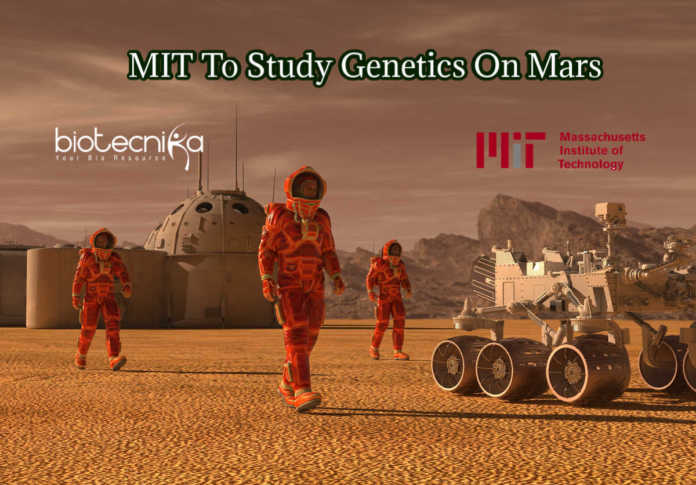MIT To Study Genetics On Mars
MIT researcher Christopher Carr has been dedicated to a program called SETG, the Search for Extraterrestrial Genomes. The MIT research team believes in the idea that life on Earth & life on Mars might be related.
Christopher Carr and his group are developing an autonomous tool that could someday travel to Mars, collect appropriate samples, extract their genetic material, and sequence it. All this could be achieved without human involvement. Carr frequently goes on extreme field trips- to practice exploring, detecting, & characterizing the organisms in Earth’s most inhospitable places. He loves doing so in the hope that someday his instruments will be ready for the real deal.
The project SETG is being funded from the NASA astrobiology program called MatISSE, the Maturation of Instruments for Solar System Exploration. The project is in collaboration with two companies in the biotech industry, which will help the MIT researchers for gene sequencing and various genetic techniques.
MIT To Study Genetics On Mars- With Help of SETG Initiative
An instrument like the SETG doesn’t exist for Earth yet, let alone for space. But SETG, which was founded by Harvard geneticist Gary Ruvkun & MIT planetary scientist Maria
Zuber in 2005, is making positive progress. Its current prototype integrates technology from two companies: Claremont BioSolutions & Oxford Nanopore Technologies. Currently, the scientists are assembling it into the final form, which they’ll test next year in the Chilean desert. If the test is successful, SETG will then be ready to apply for an interplanetary mission.Oxford makes the analytic backbone of SETG- a sequencer called MinION. This instrument reads out the ordered base pairs fed into the machine. The device has already been used to do the same-day genomic analysis of cancer cells, to analyze the microbes in glaciers, and to simultaneously sequence multiple RNA viruses in real-time. The instrument is small, self-sufficient, and cheap.
MIT To Study Genetics On Mars- Curiosity of Martin Life
The MiniION works for terrestrial DNA. But would it translate to the genetic scaffolding of possible Martian life, which possibly would have spent billions of years on a different evolutionary track? The scientists are working on such possibilities & adding extra features to MiniION.
While development isn’t done, the SETG instrument is nearing completion. The team is planning to take the completed device to the Atacama desert in Chile in April 2020. This is the final proof of concept required before NASA sees the group as ready for a real space mission. It’s one small step toward a new way NASA could do its biology business.
Maybe, someday SETG will find life in the alien red dirt- Mars. Perhaps probably not. But Carr and the team are approaching this project with a positive outlook, and they are sure that the project- MIT To Study Genetics On Mars- would surely be a success.






























